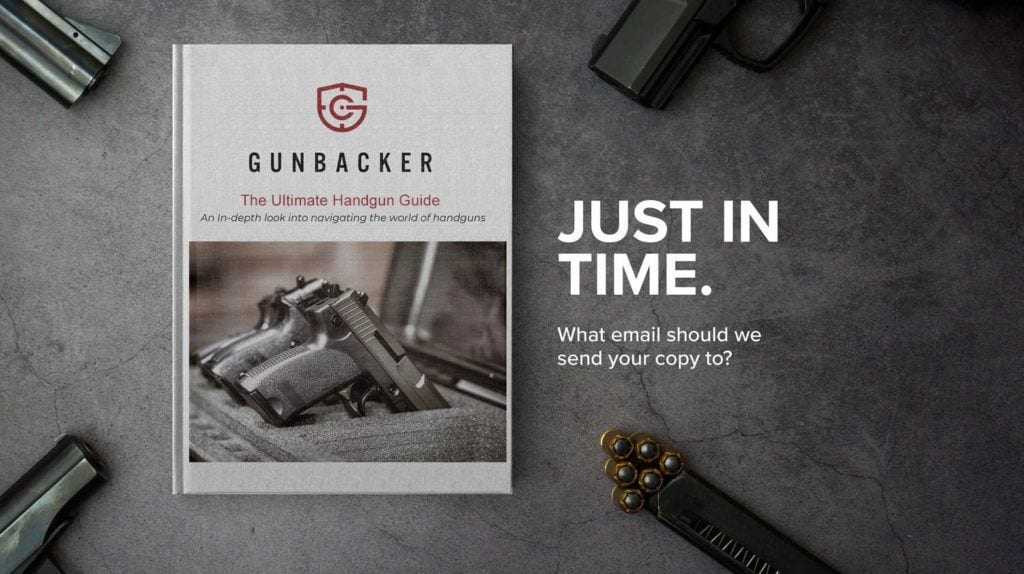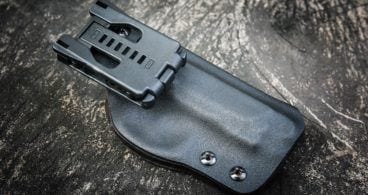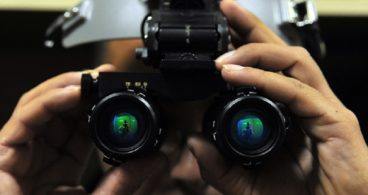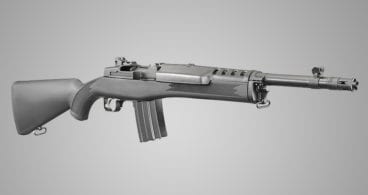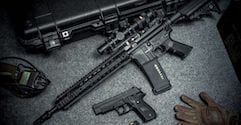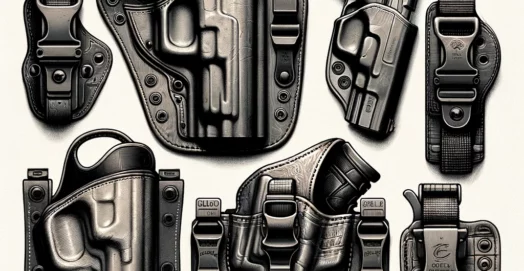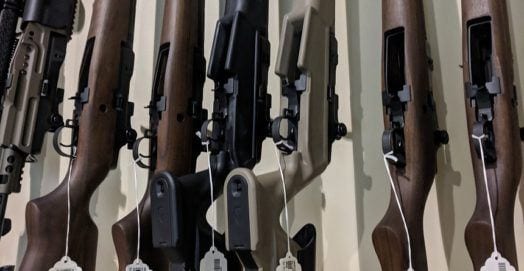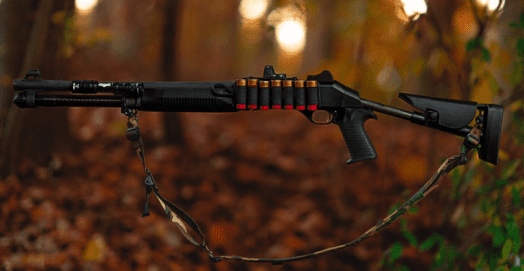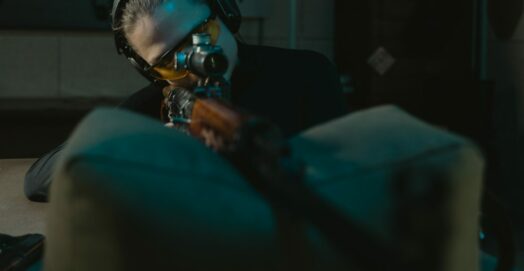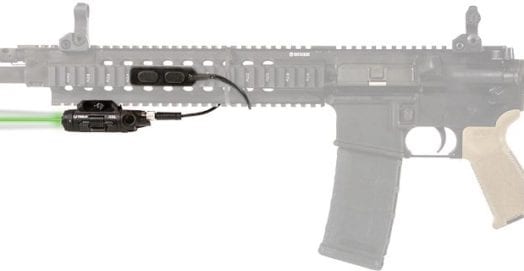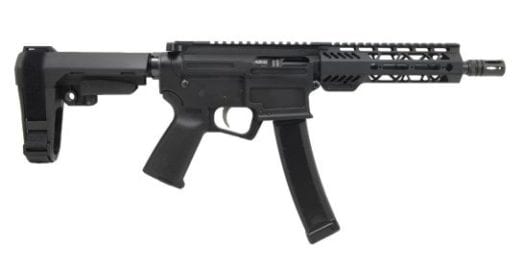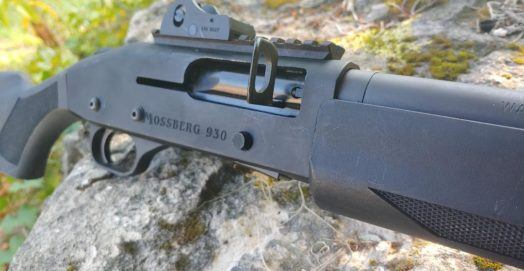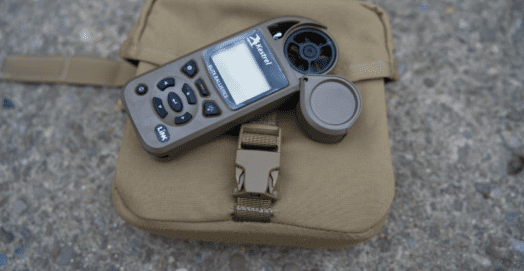CQB and Home Self Defense

You’ve been at work all day; the kids are in bed and you’re just nodding off, finally. Home defense prep is about the furthest thing from your mind. Little do you know, your home self-defense plan is about to get the test of a lifetime.
You hear the front door get kicked in. There is no mistaking this for the cat falling off of the couch once again. Someone is in your house and they do not mean well. Before you can even think, your muscle memory kicks in: you sit up in bed, reach with your left hand for your flashlight, while your right-hand meets the fingerprint scanner on your bedside gun safe, unlocking your handgun. You’re in family protection mode- out of bed and moving for the door leading with the light, gun at low ready.
At the end of the hall is that someone you most certainly did not invite over for a midnight snack. In the red glow, you see the unmistakable profile of a handgun in their hand, being raised at you.
Now you’re in a CQB scenario- this is an up-close, personal, ugly gunfight. Only one of you is likely walking out of this. You’ve run this drill a million times when you had the house to yourself. Now, in an actual CQB survival situation, you don’t flinch. You raise your sidearm and discharge it twice. The bad guy drops. Your ears are ringing, the kids are waking up and your heart is in your throat as you, just now, can start to process what just happened. But all your people are safe.
This is what real CQB looks like. That whole scenario could have unfolded in less time than it took you to read it. And if such a thing does happen to you, it will probably be without much if any warning. So, let’s think through this now. While no one is trying to get in the door, we have some time to do some family protection prep.
What, exactly, is CQB?

For starters, it’s an acronym standing for Close Quarters Battle. While the term is fairly new, having basically grown up with the development of counterterrorism and special forces in the post World War II era, it’s probably the oldest form of combat we have: up close and personal. Today, though, we’re not likely engaging with rocks and sticks unless our planning has gone severely awry, so we need to update the definition slightly beyond the caveman.
Generally, CQB can be defined as engagements in the space inside of 50 meters. Usually, it’s used in the context of urban environments. Basically, it’s house clearing and, for our purposes, home self-defense. There are a few things to keep in mind when planning for CQB.
First is the importance of training. Generally, distance in an engagement buys the combatants time to think, process information, and make good tactical calls. Inside a dark room, at night, there will be very little time or distance. Instead, you’ll have to hone your muscle memory so that you can get out of this in one piece. In this case, learn the layout of your home literally in the dark. Learn the corners, the choke points, the doors. Think about how someone would enter your home and what they might be going for. Practice engaging from various points to various points, in your home (dry firing and being safe, of course, don’t blow a hole in your television and get the local sheriff called).
The second is being consistent. As the story above points out, you’ll likely be fighting in adverse conditions. To get through this, you’re going to need to be able to shoot, move, and communicate fluidly. With that in mind, you do not want to be fumbling for a light switch or a firearm. Keep your kit in the same spot, all the time. Make the access and safety calls that make sense for you, and practice accessing your kit in hurry.
Third, keep in mind a concept popularized by people used to CQB when outmanned and outgunned, namely the SEALS. A concept they often deploy is speed, surprise, and violence of action. If you get the upper hand by catching a home intruder before he can process what is happening and handle the situation appropriately, you might just have a chance.
So, what kind of firearm is best for CQB?

CQB is often a story of fighting with what you have. With that said, we’ll be going over five firearms and how you might work them into your CQB setup. Some will be general categories, while others will be more specific recommendations. We’ll also mention some handy attachments.
1. A handgun.
Chances are, if you’re reading this you already have a handgun, likely a concealed carry weapon. This is to your advantage: it’s the weapon with which you are the most familiar, and, we hope, train with the most. You can load, unload, fire, hit, and clear malfunctions in the dark, upside down, and tied to a chair. Well, probably not the last bit, but you get the idea.
Also, handguns are small and easy to grab, from, for example, a bedside gun safe. We’ve covered these before, and think they’re a great option for quick access. Common models, such as Glocks, Sigs, and the various 1911’s on the market would be great for this, but I don’t think anyone would thumb their nose at a .357 revolver in a CQB scenario. In fact, even up until Vietnam, folks who did serious CQB, the tunnel rats, often preferred the quick and quiet operation of a revolver.
2. A shotgun.
Shotguns are among the most commonly owned firearms in America. Most of us, even if we do not own one, know exactly how to run a pump gun. Whether in 12 or 20 gauge, several rounds of buckshot on tap present a serious threat to anyone that might do you harm. While the deterrent effect of the sound of a racking slide is grossly overstated, you’ll probably feel much better knowing you’re taking a shotgun into a gunfight. Several brands make fantastic options, but old school hunting shotguns can do wonderfully, albeit at the cost of being somewhat heavy and long. Several manufacturers, such as Mossberg and Remington, also make shorter ‘firearms’ that are basically designed for CQB, such as the Mossberg Shockwave. Mounting a light on your shotgun is also a great idea- thou shalt not shoot what thine cannot see.
3. An AR pistol.
While there are some concerns about the penetrating power of .223 inside of a house, if you happen to have an AR pistol with a short barrel and a brace, you have an excellent CQB partner. Based on early ideas for a PDW during Vietnam, short AR15s have been a common sight among special forces operators since the mid-1960s. And for good reason. While you might be going down the hallway with a dozen rounds in a pistol, or half that in a shotgun, an AR means that, depending on the state, you have thirty opportunities to dissuade a home invader of their idiocy. Between that, the lightweight, and common manual of arms, this is a great option. For an AR, I recommend a red dot sight, as this makes your life much, much easier in a gunfight. Also, a light is another must-see the above point about seeing and shooting. Finally, the ATF strongly recommends that you do not put a vertical foregrip on a pistol, if you happen to do the paperwork on SBR and AR, a short carbine with grip is a great friend to have while clearing a house.
4. A full-length rifle.
Similar to the AR pistol, it’s important not to discount what you already have. While your mini 14, or M1a, even M1 Garand might not look like the coolest black tactical rifle on the market, you might find it pressed into service in a hurry. While a full-length rifle might end up cumbersome in a fight, you have the advantages of a full-powered rifle cartridge and a longer barrel. Additionally, if, for some reason, you have to transition beyond a CQB setting into a more DMR type of engagement, you’ll be happy for the extra reach afforded by a rifle. Again, a light, a red dot optic, and a grip make all the sense in the world here.
5. PCC (Pistol Caliber Carbine)
Finally, there is a class of weapon developed for CQB home self-defense scenarios. Dating back to the trenches of WWI, the submachine gun was developed for fast, up-close engagements where a rifle is just too long. On the civilian front, this need has been met in recent years by the pistol caliber carbine, or PCC for short. A PCC is usually in a pistol caliber such as 9mm, and is often modeled on a submachine gun design. There are several popular variants based around Glock magazines, though, now, HK has brought a version of their legendary mp5 back to the American market. With these, a brace, light, and (if in SBR format with all the legal stuff handled), make a PCC a fantastic option in a firefight indoors.
What else will I need in a CQB scenario?

Aside from a firearm, here are a few items of kit that we think you’d find handy in a CQB home self-defense survival situation.
1. A flashlight is absolutely essential. It’s entirely possible that you might find yourself in a sticky situation in the dark. When it does happen, the last thing you want to do is consider shooting blindly in the dark. While we recommend having a light on your weapon, it’s also a great idea to have one next to your bed, in your car, or wherever you spend a lot of your time. We’ve got a few specific recommendations as well. First, get something with a push-button activation: fumbling with a twisting motion that takes two hands is just not time you have in a CQB home self-defense scenario. Second, get something BRIGHT. If you need to, being able to light up a whole room is handy, as is temporarily disorienting anyone who is giving you a hard time. Lastly, consider a red filter. A bright light in a dark room will wreck your night vision and put you at a massive disadvantage. A red light is much less damaging to your night vision and thus ideal for nighttime CQB.
We take gun safety really seriously, and you should too. That said, access is vital, as is speed, in CQB. Keeping your long guns locked in a safe or a cabinet is usually a good call. If you do choose to go with a lock, strongly consider an identilock lock to make sure you’ll have quick and reliable access.
3. If for some reason, you have a few seconds to prepare, you’ll want to go into a CQB home self-defense scenario as well protected as humanly possible. With that said, a plate carrier with plates installed would be a great option. Some models have easy on/off features that make this a feasible option if you have more than a moment to prepare. From there, you can keep some ammunition close at hand on the MOLLE webbing in case things get seriously hairy.
4. A fixed-blade knife. As we’d mentioned before, CQB home self-defense is about zero percent fun, as you’ll be in combat with someone, or someones, who mean to do you harm. We also recommend firearms as self-defense tools. With that said, preparation is key. Ammo runs out. Guns jam. Yours might get taken from you, or you might drop it. If that does, for some reason happen, you’re going to have to go to the oldest of schools to survive. That means taking something pointy and sticking it somewhere that hurts. In such a scenario, knowing that your last-ditch tool is a good one is your last line of defense, quite literally. There are a variety of good options, but something you can fix to a plate carrier is an excellent option that sure beats the old Swiss Army knife in CQB.
5. Now, with all of this talk of shooting and stabbing, it’s pretty logical to think that someone could get hurt in a CQB scenario. With that in mind, a first aid kit aimed at trauma is necessary. At a minimum, have a tourniquet, some clotting agent, and some dressings close at hand. We’ve covered first aid kits and the past, and much of that advice applies here as well.
6. We’ve mentioned light before. Considering that most of us don’t exactly have high-speed tactical night vision goggles or the budget to get the really cool ones, we need to do what we can to keep from fighting in the dark. With that in mind, it’s a good idea to have some night lights set up in your house. This will provide some ambient light in which you can get a better idea of what’s going on in order to make good tactical decisions. It might sound silly now, but it certainly won’t sound silly when you can tell the difference between a home intruder and your neighbor accidentally breaking in after a few too many drinks.
7. Earlier, we mentioned a tactical concept: move, shoot, and communicate. We’ve covered the first two really well. You’ll have light and the tools you need to engage targets. With that said, if there has been a home defense shooting, you’ll want to get in contact with your attorney and law enforcement ASAP, as well as first responders if anyone is hurt. Thus, your phone should be something you consider part of your CQB kit.
Parting Shots
Well, there you have it. We’ve walked through one of the worst possible circumstances that you could possibly imagine. Looking at CQB home self-defense survival, you can see that what we’re discussing is going to be some up close and high-stress work. Conceptually, it comes from some of the worst combat human beings have ever been in, whether they’re the trenches at the Somme, going house to house in Stalingrad, into a tunnel somewhere in North Vietnam, or taking Fallujah. We can learn from those events, and come up with some basic tactics that might give you that tenth of a second edge you need. In addition to the ideas and kit we’ve listed here, consider taking a few CQB courses; they’re offered all over the country and can help you make the best use of the tools in your arsenal. Hopefully, you’ll never need any of this information beyond some entertainment. But, if you do, we hope you’ve learned something here to assist you in getting you and your folks out of what would otherwise be a nightmare scenario.
